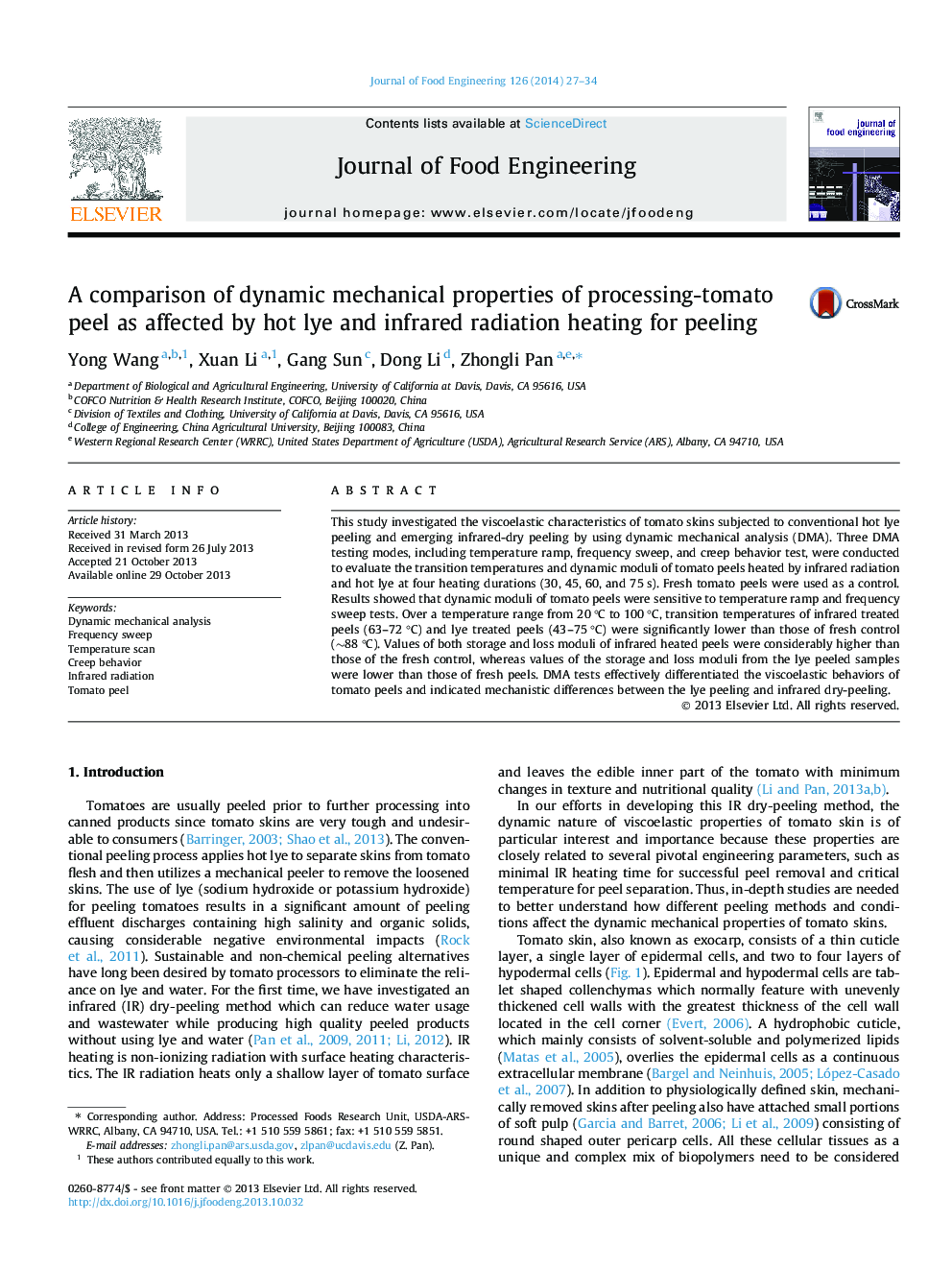| Article ID | Journal | Published Year | Pages | File Type |
|---|---|---|---|---|
| 223177 | Journal of Food Engineering | 2014 | 8 Pages |
•Dynamic mechanical analysis characterized the viscoelastic changes in tomato skins.•Dynamic moduli of infrared heated peels differed from those of lye heated samples.•Viscoelastic behaviors reflected mechanistic difference between lye and infrared peeling.•Shifts in transition temperature after peeling indicated structural changes in biopolymers.
This study investigated the viscoelastic characteristics of tomato skins subjected to conventional hot lye peeling and emerging infrared-dry peeling by using dynamic mechanical analysis (DMA). Three DMA testing modes, including temperature ramp, frequency sweep, and creep behavior test, were conducted to evaluate the transition temperatures and dynamic moduli of tomato peels heated by infrared radiation and hot lye at four heating durations (30, 45, 60, and 75 s). Fresh tomato peels were used as a control. Results showed that dynamic moduli of tomato peels were sensitive to temperature ramp and frequency sweep tests. Over a temperature range from 20 °C to 100 °C, transition temperatures of infrared treated peels (63–72 °C) and lye treated peels (43–75 °C) were significantly lower than those of fresh control (∼88 °C). Values of both storage and loss moduli of infrared heated peels were considerably higher than those of the fresh control, whereas values of the storage and loss moduli from the lye peeled samples were lower than those of fresh peels. DMA tests effectively differentiated the viscoelastic behaviors of tomato peels and indicated mechanistic differences between the lye peeling and infrared dry-peeling.
